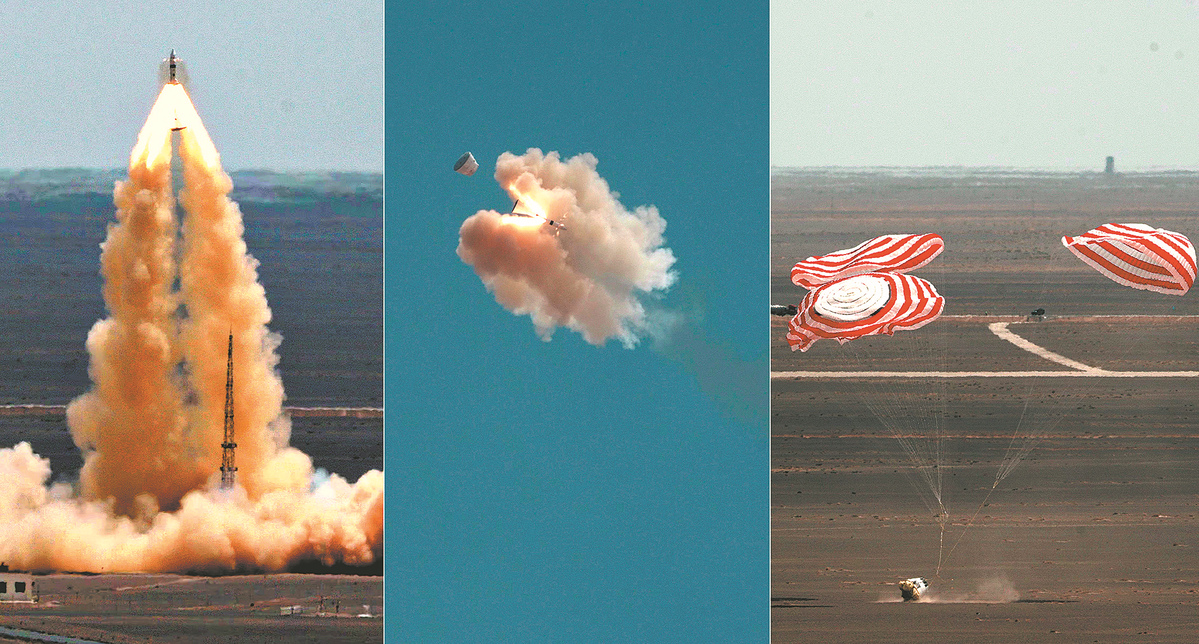Mengzhou escape trial lays groundwork for crewed lunar mission


China successfully carried out a zero-altitude escape flight test of its new Mengzhou manned spacecraft on Tuesday at the Jiuquan Satellite Launch Center in Northwest China, marking the first such test in 27 years.
The test represents a major breakthrough in the country's manned lunar exploration program, the China Manned Space Agency said in a news release on Tuesday.
At 12:30 pm, an ignition command was issued and the escape engine of the Mengzhou spacecraft fired successfully. The spacecraft and its escape tower lifted off under the propulsion of solid-fuel engines.
Roughly 20 seconds later, the combination reached the predetermined altitude, and the return capsule separated from the escape tower. The parachute deployed smoothly, and at 12:32 pm, the capsule landed safely in the designated test area, cushioned by an airbag system, the agency said.
China's last similar test was in 1998 for the Shenzhou manned spacecraft. The test simulated a zero-altitude escape flight of the Shenzhou spacecraft in the event of a launch pad malfunction of the carrier rocket.
The Mengzhou spacecraft is a new generation of manned space vehicles independently developed for future space missions. Unlike the Shenzhou system — in which the rocket was responsible for escape and the spacecraft for rescue — the Mengzhou handles both tasks as a fully integrated system, according to the agency.
The escape system of the Mengzhou spacecraft adopts a combined approach of "escape tower-assisted escape within the atmosphere and full spacecraft escape beyond the atmosphere".
The escape tower handles escape operations from the prelaunch phase up to its jettison during ascent. After the tower is jettisoned and until the spacecraft separates from the rocket in low-Earth orbit, escape relies on the propulsion system of the service module. Both the escape process and subsequent rescue operations are centrally controlled by the return capsule, achieving unified control and a high degree of resource integration across the spacecraft.
Tuesday's test evaluated the performance of escape and rescue subsystems, verified the escape sequence and separation mechanisms, and gathered real-flight data on escape trajectories through closed-loop control systems.
Escape and rescue capabilities are critical safety measures in manned spaceflight, allowing astronauts to be pulled away from danger and returned to Earth in the event of an emergency during launch.
Mengzhou is designed to carry up to seven astronauts and meets advanced international standards, the agency said.
In the future, the spacecraft will support operations related to China's space station and crewed lunar exploration missions. The successful test lays an "important technical foundation" for the next stages of lunar exploration, the agency said.
Development of other key components for the lunar mission — including the Long March 10 carrier rocket and a lunar lander — is also progressing steadily, with additional tests to be carried out as planned.





































